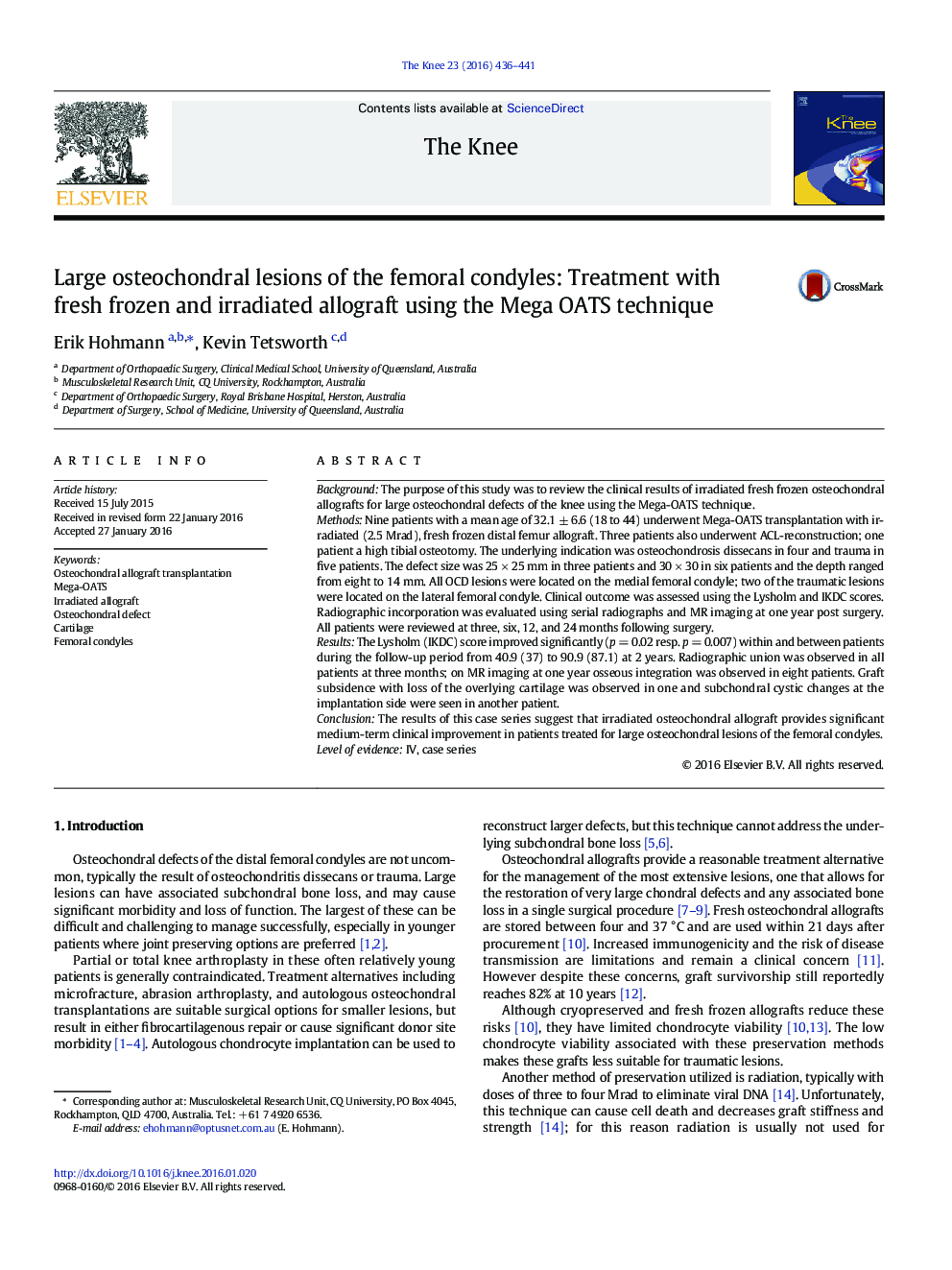| کد مقاله | کد نشریه | سال انتشار | مقاله انگلیسی | نسخه تمام متن |
|---|---|---|---|---|
| 6211128 | 1267205 | 2016 | 6 صفحه PDF | دانلود رایگان |

- Irradiated allografts are safe and effective treatment for large osteochondral lesions.
- Grafts are incorporated one year post surgery.
- Cartilage signals were similar to normal cartilage on 3Â T MRI one year after surgery.
- The Mega-OATS technique demonstrated significant clinical benefits.
- Continuous clinical improvement was observed for the first two years postoperative.
BackgroundThe purpose of this study was to review the clinical results of irradiated fresh frozen osteochondral allografts for large osteochondral defects of the knee using the Mega-OATS technique.MethodsNine patients with a mean age of 32.1 ± 6.6 (18 to 44) underwent Mega-OATS transplantation with irradiated (2.5 Mrad), fresh frozen distal femur allograft. Three patients also underwent ACL-reconstruction; one patient a high tibial osteotomy. The underlying indication was osteochondrosis dissecans in four and trauma in five patients. The defect size was 25 Ã 25 mm in three patients and 30 Ã 30 in six patients and the depth ranged from eight to 14 mm. All OCD lesions were located on the medial femoral condyle; two of the traumatic lesions were located on the lateral femoral condyle. Clinical outcome was assessed using the Lysholm and IKDC scores. Radiographic incorporation was evaluated using serial radiographs and MR imaging at one year post surgery. All patients were reviewed at three, six, 12, and 24 months following surgery.ResultsThe Lysholm (IKDC) score improved significantly (p = 0.02 resp. p = 0.007) within and between patients during the follow-up period from 40.9 (37) to 90.9 (87.1) at 2 years. Radiographic union was observed in all patients at three months; on MR imaging at one year osseous integration was observed in eight patients. Graft subsidence with loss of the overlying cartilage was observed in one and subchondral cystic changes at the implantation side were seen in another patient.ConclusionThe results of this case series suggest that irradiated osteochondral allograft provides significant medium-term clinical improvement in patients treated for large osteochondral lesions of the femoral condyles.Level of evidenceIV, case series
Journal: The Knee - Volume 23, Issue 3, June 2016, Pages 436-441